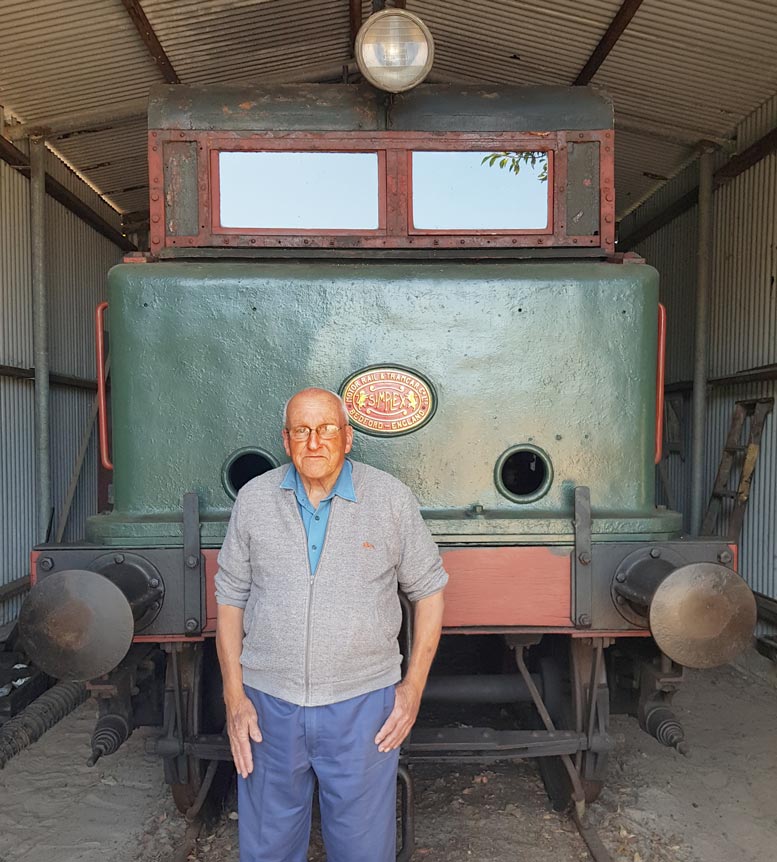Site 21: Jetty Engine (aka Green Frog)
PREV END
History of the Jetty Engine (Green Frog)
The jetty Engine (Green Frog) is the last remaining and possibly the most significant link to the industrial past of Byron Bay.
It was built in Bedford City in England in 1922 and shipped to Australia on the SS Ulmarra in 1923 by the North Coast Steam Navigation Company (NCSNC). It was assembled at the rail work shop in Lismore before being driven to Byron Bay in May 1923 on the rail way line as its first test run.
The Simplex Jetty engine was purchased at a cost of 1140 Pounds to replace the horse team that pulled the two tram carriages used to transport passengers and freight from the costal steamers unloading at the “Old” jetty, which was located at the northern end of Jonson Street, to the railway station in the town centre.
When a severe storm hit Byron Bay in May 1921 resulting in the wreck of the SS Wollongbar, it was decided to build a longer “New” jetty on the western end of the beach off Manfred Street, to give a safer deeper water anchorage. This was completed in 1928, and a new rail branch line was built to connect the New jetty to the railway station and the various industries located in the Bay including, Andersons Meat Works, Norco Co-Op butter and smallgoods, the Timber Sawmill, Zircon Rutile sand mining operations, and fishing fleet catches to the fishing co-op processing works.
During the cyclone in 1954 a long section of the jetty and 2 large unloading cranes were lost in the big seas, along with 23 of the 32 commercial fishing boats.
This partial destruction of the new jetty signalled the end of the operations of the N.C.N.C. twice weekly sea transport from Byron Bay to Sydney and the eventually the closure of the fishing Co-op and the relocation of the fishing fleet to Brunswick Heads. However, 1954 also coincided with the commencement of the Whaling Industry in Byron Bay and the Jetty engine commenced a new chapter in its life transporting the whale carcases from the remnants of the jetty to the whale processing plant located next to the abattoirs on Kendall Street/The Esplanade.
When the whaling operations finished in October 1962 after 9 years of operation, the Simplex Jetty Engine continued its service shunting products for rail transport to the Sydney market for the remaining industrial operations in the Bay until the closure of the abbatoirs in 1983, after which it was given to the Byron Bay Historical Society.
Since 1983 Mr Brian Parks, the last Driver of the Simplex Rail Engine, has continued as a volunteer to preserve the Engine and show it to interested rail enthusiasts until 2022 when Sydney trains and NSW State Rail gave the Byron Bay Historical Society (BBHS) a grant that enabled the “Old Jetty Engine” to be professionally preserved and housed in its current location on the Southern end of the Byron Bay railway Station
A brief 5-minute interview with Brian Parks, explaining the specifications of the engine, can he listened to by clicking on the audio link at the top of this page.
